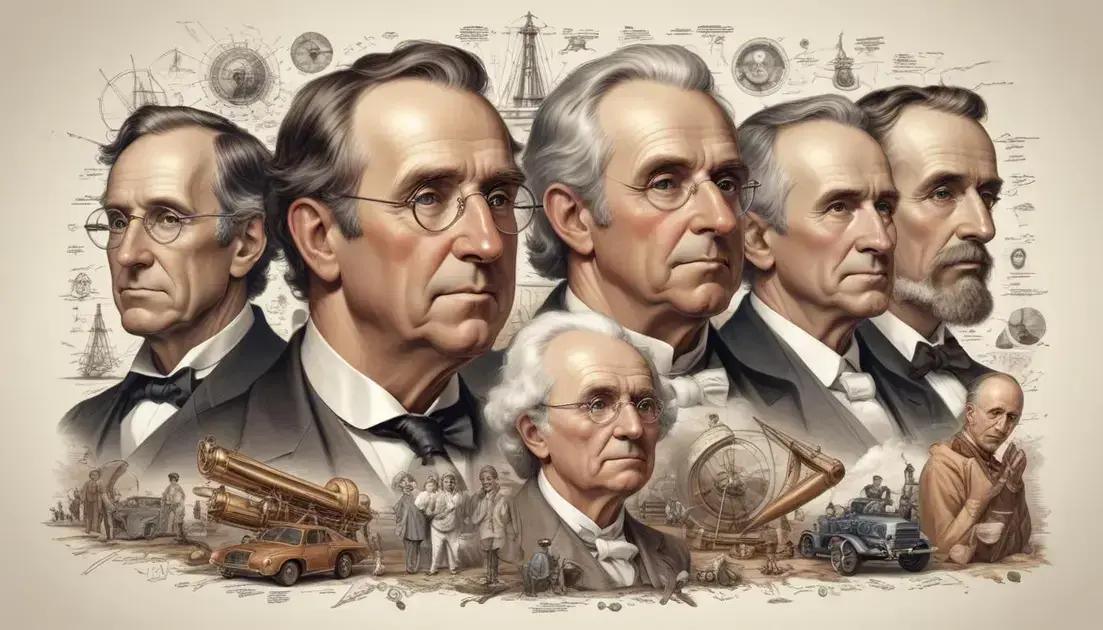
How the Biblical Canon Was Established in the Early Church
The Biblical Canon was established through a detailed process involving early Christian communities that engaged in debates and discussions about which texts to accept as sacred. Influential church leaders and councils, like the Council of Nicaea, played a significant role in determining which writings were considered authentic and impactful. Various criteria, including apostolic authorship and alignment with core teachings, guided these crucial decisions. The finalization of the canon created a unified set of scriptures that continues to guide millions of believers today.
Biblical Canon is a fascinating subject that touches on the authenticity and authority of sacred texts. Have you ever wondered how early Christians determined which writings were divinely inspired? Dive into this rich exploration!
The Role of Early Christian Communities
Early Christian communities played a vital role in shaping the Biblical Canon. They gathered regularly to discuss and decide which writings were truly inspired. This was not an easy task. Many texts circulated, and not all were accepted.
Gatherings and Discussions
These communities met in homes and public spaces. They talked about doctrines and shared stories. Leaders like bishops and elders guided these discussions. They looked for guidance in prayer and reflection.
Criteria for Selection
When deciding on texts, they asked key questions. Was the text written by an apostle or someone close to them? Did it align with the teachings of Jesus? Was it widely accepted and used in worship? These criteria helped them in this significant task.
Influence of Different Groups
Different regions had different favorites. The church in Alexandria might favor one letter over a community in Rome. Despite these differences, many texts emerged as favorites across communities, like the Gospels and Paul’s letters.
Challenges Faced
Disputes arose as people disagreed about certain texts. Some claimed that specific writings should not be included. These discussions could lead to divisions, but they ultimately strengthened the faith of many.
Through these early efforts, communities laid the groundwork for what we now know as the Biblical Canon. Their dedication and discussions made it possible for these sacred texts to reach us today.
Criteria for Canonicity
Determining which texts would make it into the Biblical Canon wasn’t easy. Early Christian leaders used specific criteria for canonicity to decide. It helped them figure out what was truly inspired.
Apostolic Origin
One big question was whether a text was linked to an apostle. If a book was written by an apostle or someone closely connected to them, it had a better chance of being included.
Consistency with Teachings
Another important factor was how well the text matched the core teachings of Jesus. If a writing contradicted widely accepted beliefs, it likely wouldn’t make the cut. They wanted to keep the faith pure and aligned.
Widespread Acceptance
A text’s popularity also played a role. If many communities used a particular writing in their worship, it showed that people found it meaningful. This broad acceptance helped add credibility to the text.
Spiritual Impact
Finally, leaders considered the spiritual impact of the writing. A piece that inspired faith or guided moral behavior was more likely to be accepted. Personal testimonies of its influence mattered.
These criteria shaped the Biblical Canon we know today. By using these guidelines, communities ensured the texts were authentic and valuable.
Influential Church Figures
Many influential church figures played a crucial role in establishing the Biblical Canon. These leaders guided early Christians and helped shape the faith we know today. Their insights were vital in deciding which texts should be included.
Apostolic Fathers
The Apostolic Fathers, like Clement of Rome and Ignatius of Antioch, were key players. They were close to the apostles and wrote letters that spread Christian teachings. Their works were valued by early communities.
Supervisors and Bishops
Bishops held significant influence too. Figures like Irenaeus and Athanasius carefully analyzed texts. They argued for the inclusion of certain writings based on their teachings and impact on faith.
Early Councils
Church councils also helped in this process. In the late 4th century, the Council of Carthage recognized certain texts as canon. These gatherings allowed church leaders to discuss and affirm their choices.
The Role of Theology
Theological debates prompted further examination of texts. Leaders questioned the implications of various writings. They focused on ideas like salvation and moral teachings, crucial for the early church’s beliefs.
Through the efforts of these influential figures, early Christians could base their faith on a solid foundation of scriptures. Their discussions and decisions greatly shaped our understanding of the Bible today.
The Impact of Historical Context
The historical context played a huge role in shaping the Biblical Canon. Different events influenced how early Christians viewed specific texts. Understanding this context helps us grasp why certain writings were accepted.
Societal Changes
As the Roman Empire spread, more people heard the Christian message. This growth brought diverse cultures into the fold. Early Christians had to consider how these cultures impacted their beliefs and teachings.
Persecutions and Responses
Persecutions also shaped the early church. When Christians faced trials, some texts became more valued. Writings that offered hope and guidance gained importance during tough times.
Philosophical Influences
During this period, many philosophies were circulating. Ideas from Greek and Roman thought influenced Christian leaders. They often engaged with these philosophies to defend their beliefs and integrate helpful concepts.
Political Factors
Political events influenced how texts were recognized too. As emperors changed, so did the church’s status. Decisions on which texts to endorse often reflected the political climate.
All these factors show that the historical context was vital for deciding on what became the final Biblical Canon. Without this context, our understanding of these sacred texts might be quite different.
Debates and Disputes
Throughout history, debates and disputes shaped the development of the Biblical Canon. Different groups within the early church had varying opinions on which texts should be included. This variety of thought sparked significant discussions.
Early Conflicts
As communities grew, they faced disagreements over certain writings. Some believed specific texts reflected true teachings, while others argued they were misleading. This conflict encouraged deeper examination of many writings.
Key Figures in Disputes
Influential church leaders also had different views. Figures like Marcion proposed their own lists of accepted texts. His ideas led to important discussions and forced others to clarify their positions on the canon.
Criteria for Inclusion
During these debates, early Christians used specific criteria to evaluate texts. They asked questions about apostolic authority, consistency, and widespread use. These discussions helped many understand the need for a more standardized canon.
Outcomes of Disagreements
Over time, many debates led to clearer definitions of accepted writings. While some texts were agreed upon, others were set aside. This process ultimately shaped what we now recognize as the Biblical Canon.
The impact of these debates and disputes was significant. They helped strengthen the faith and unity among early Christians as they sought to define their beliefs more clearly.
Finalization of the Canon
The finalization of the canon was a crucial step for early Christianity. This process involved agreeing on which texts would be considered sacred and authoritative. It wasn’t easy, and it took centuries to reach a consensus.
Key Councils
Several important councils discussed the canon. The Council of Nicaea in 325 AD began these conversations. Church leaders met to decide on key doctrines and which texts were truly inspired.
Influence of Church Leaders
Influential church figures played a huge role during this time. Their teachings and decisions guided communities in understanding what should be included. Leaders like Athanasius provided key lists of accepted texts.
Popular Writings
Throughout this period, specific writings gained more acceptance. Books like the Gospels of Matthew, Mark, Luke, and John were widely used in worship. Their consistent use strengthened their position within the church.
Debates and Disagreements
Not all discussions went smoothly. Different regions had different preferences, leading to debates. Some texts challenged core beliefs, making it essential to agree on what the church would affirm.
After much discussion and examination, the canon was finalized. By the end of the 4th century, many communities accepted a standard list of sacred writings. This finalization helped unify the faith and provided a foundation for Christian teachings.
Conclusion
In conclusion, understanding how the Biblical Canon was established is crucial for appreciating its significance today. Early Christian communities engaged in debates and discussions that shaped the faith we know. Key figures and councils played a big role in deciding which writings were deemed sacred.
The process involved a careful evaluation of various texts, focusing on their authenticity and impact on believers. These discussions were not always easy, but they paved the way for a unified set of scriptures that guide millions. By studying this history, we gain insight into how faith practices were formed and how they continue to affect our lives today.


